Kidnapper Ants Steal Other Ants' Babies — And Brainwash Them
A miniature drama is playing out on the forest floor in California’s preeminent mountain range, the Sierra Nevada, at this time of year. As the sun sets, look closely and you might see a stream of red ants frantically climbing over leaves and rocks.
They aren’t looking for food. They’re looking for other ants. They’re kidnappers.
“It’s hard to know who you’re rooting for in this situation,” says Kelsey Scheckel, a graduate student at UC Berkeley who studies kidnapper ants. “You’re just excited to be a bystander.”
On this late summer afternoon, Scheckel stares intently over the landscape at the Sagehen Creek Field Station, part of the University of California’s Natural Reserve System, near Truckee, California.
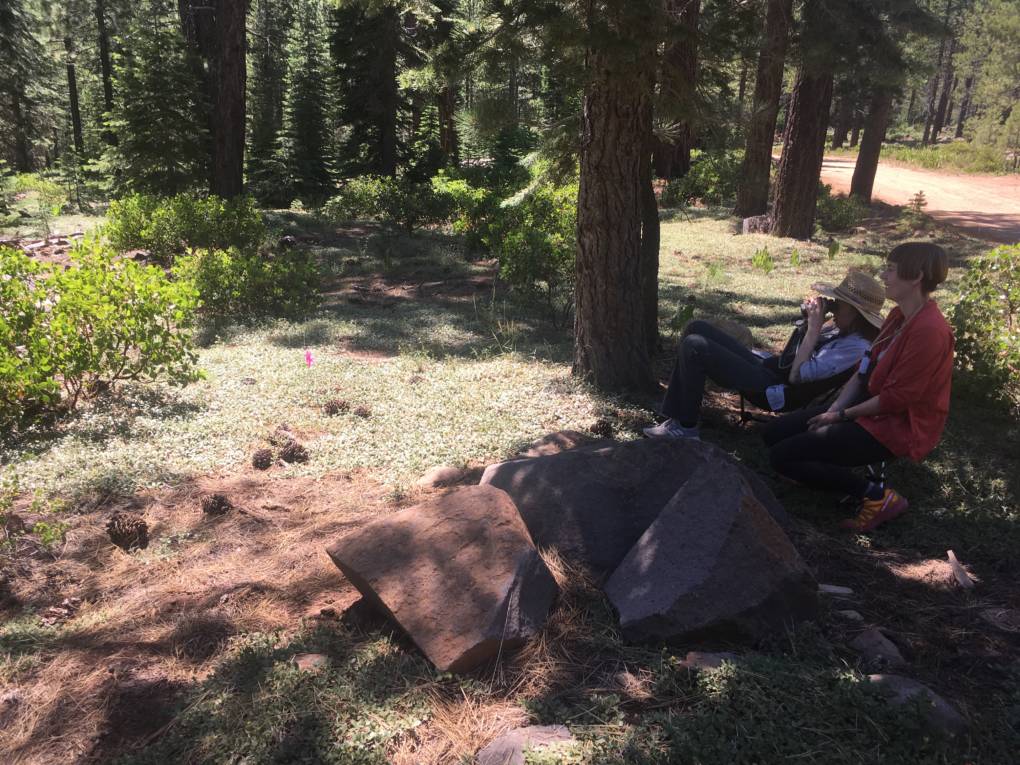
“The first thing we do is try to find a colony with two very different-looking species cohabitating,” Scheckel says.
“That type of coexistence is pretty rare. As soon as we find that, we can get excited.”
After they locate a nest, Scheckel and other researchers plant a tiny flag so they can return to study the ants’ behavior day after day.
The nest can be underground or in decaying wood. The researchers wait, using binoculars to look from a distance for the first signs of a raid.
As the last rays of sunlight trickle through the trees, the researchers spot a few red ants venturing out from the nest. They’re scouts, on the search for the nest of a different species of ant nearby. One of their favorite targets is a species of all-black ant.
The red scout ants fan out and scour the forest floor. If one of them finds a suitable victim’s nest, it dashes back to its home nest to rouse the kidnappers to prepare for a raid.
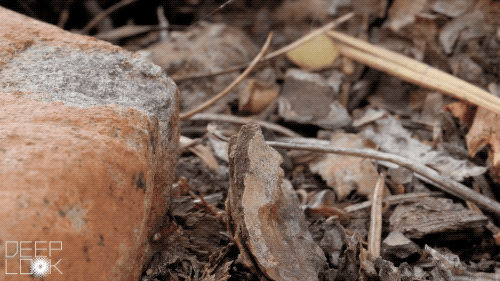
“It’s a very busy, kind of messy collection of ants at their entrance at first, until a few of the scouts start the raid and everyone follows,” says Scheckel, who is part of Neil Tsutsui’s Lab, which focuses on the evolution, ecology and behavior of social insects.
As the assault begins, the kidnappers stream out and scurry en masse toward the victims’ nest. It’s an impressive sight. The stream of bright red ants can be hundreds, even thousands strong.
“It looks like a highway of ants,” Scheckel says.
The black ants seem to know what’s coming. They rush to block the entrances to their nest with dirt, pebbles and tiny sticks. But it’s all for naught.
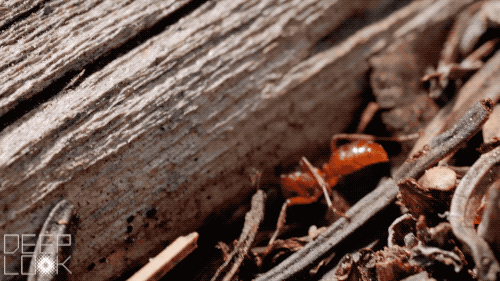
The kidnappers arrive and start digging. They excavate the blockage, piling the debris outside the entrance hole.
The black ants try to defend their nest, but they’re overwhelmed by the sheer number of the raiders. Some of the black ants put up a fight, and some try to flee, but many seem to simply panic in the face of the onslaught.
“The kidnapper ants create this big mass at the entrance, almost like in a zombie movie,” says Scheckel. “It’s a very chaotic scene.”

It doesn’t take long for the kidnappers to break into the nest. Once they’re inside, they go straight for the black ants’ young.
They target the black ants’ pupae, the last developmental stage before juvenile ants become adults.
“The kidnappers emerge with these tiny white pupae that are about the size of a grain of rice, but maybe a little bit more plump,” says Scheckel.
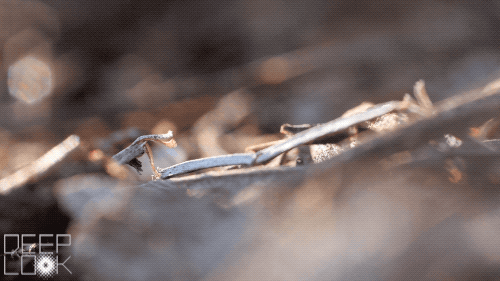
Some of the pupae are still in their protective silken cocoons. Others that are more mature have had their cocoons removed and look like translucent white ants curled up and motionless.
The kidnappers hold the pupae in their long-hooked jaws, called mandibles. The mandibles seem perfectly shaped to grasp the helpless juveniles without damaging them.
“The kidnapper ants’ jaws are really good for holding the pupae,” Scheckel says. “But they also happen to be very good in battle as well. Because they have pointy tips, they’re really good at piercing the exoskeleton of their rivals in a fight.”
The kidnappers scamper back to their home nest holding their stolen prizes high.
As quickly as it started, the raid is over. But the story isn’t done.

“Ants live in a chemical world,” explains Scheckel. “They primarily use their sense of smell for navigating their environment.”
“Ants don’t have noses like we do,” she continues.
To learn about the world around them, ants constantly tap their antennae — which are full of tiny holes — on every surface they come across. The behavior is called antennation. Ants antennate to find food and to tell their nest mates apart from strangers.
Ants also create their own odors. Each nest has its own specific smell, which is a combination of chemicals made by the ants themselves mixed with those from their food and surroundings.
“You can kind of think about it like going over to your friend’s house growing up,” Scheckel says. “You just walked in and that was kind of the smell of their home. You never forget it. That’s what ants have. It’s kind of a colony signature.”
Ants collect odors in glands located at the corner of their mouths. They’re like tiny sacs full of chemicals that come from everything the ant comes in contact with. When they groom themselves, they cover themselves in their colony’s signature “perfume.”
When a young ant emerges from its cocoon, it starts with a blank canvas. “It’s basically naked of smells,” Scheckel says.
So when the raid hits, the young ant has no way to know it’s been kidnapped. It can’t tell that it’s being held captive and not in its home nest with its sisters.
The kidnappers trick the stolen ant into thinking it belongs in this new nest by grooming it from top to bottom with the chemicals stored in those glands.
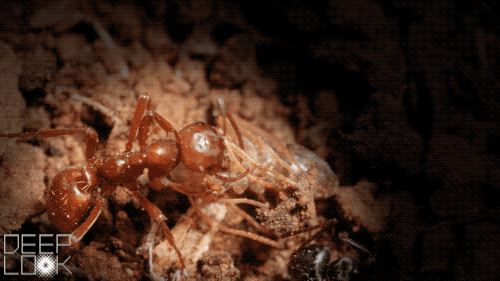
“They’re essentially bathing the stolen ants in the kidnappers’ nest odors,” says Scheckel.
The young ants think they are home. It’s a form of chemical brainwashing. That’s why the kidnappers choose to steal pupae.
“Adults are kind of already set in their ways, so it would be difficult to change their mind about what their identity is,” Scheckel says. “They are not as malleable.”
When they arrive in their new home, the newly enslaved ants get to work maintaining the nest, caring for the young and even leaving the nest to forage for food.
Unlike their captors, the kidnapped ants’ jaws are perfectly shaped for foraging and are serrated for processing food.
Inside the nest, a hungry kidnapper will approach a captive with its mandibles wide-open and its head tilted up.
“It’s kind of like a begging position,” explains Scheckel. “Almost like a baby bird.”
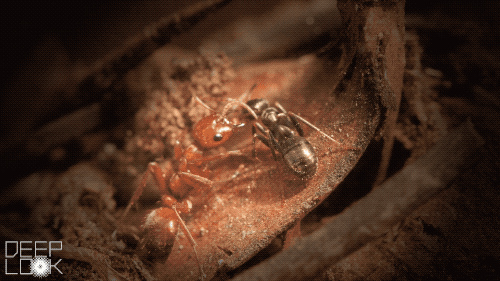
The kidnapper ants completely rely on the captive ants to feed them. Their pointy, curved jaws lack the serrations that would allow them to chew their own food. Without their slaves, the kidnappers would starve. For that reason they’re considered “obligate” kidnappers.
The two ants will meet mouth to mouth in a kissing pose. The captive ant regurgitates food directly into the kidnapper’s mouth. It’s a process called trophallaxis.
“It’s an incredibly altruistic behavior that is only reserved for nest mates,” says Scheckel. “So it’s very unusual to see members of different species doing that with one another. That’s what makes it so unique in the parasitic system.”
Scheckel and her colleagues study these types of relationships in insects. In these unusual ants, the kidnappers are considered parasites and the ants they kidnap are called hosts. It’s an unusual system because the parasite brings the host into its own home.
“They’re not bloodsucking, but they’re definitely resource-sucking,” explains Scheckel.
In addition to any workers that die defending their nest from the invaders, the host species loses the next generation of its workers. Those that remain in the colony may struggle to get enough food to survive the winters when they’re snowed in and can’t leave their nest to forage.
While quite familiar with the red kidnapper ants, Scheckel puts most of her attention on studying another species of kidnapper ant. Instead of being entirely red-colored, the species she studies has red heads and thoraxes, and black abdomens.
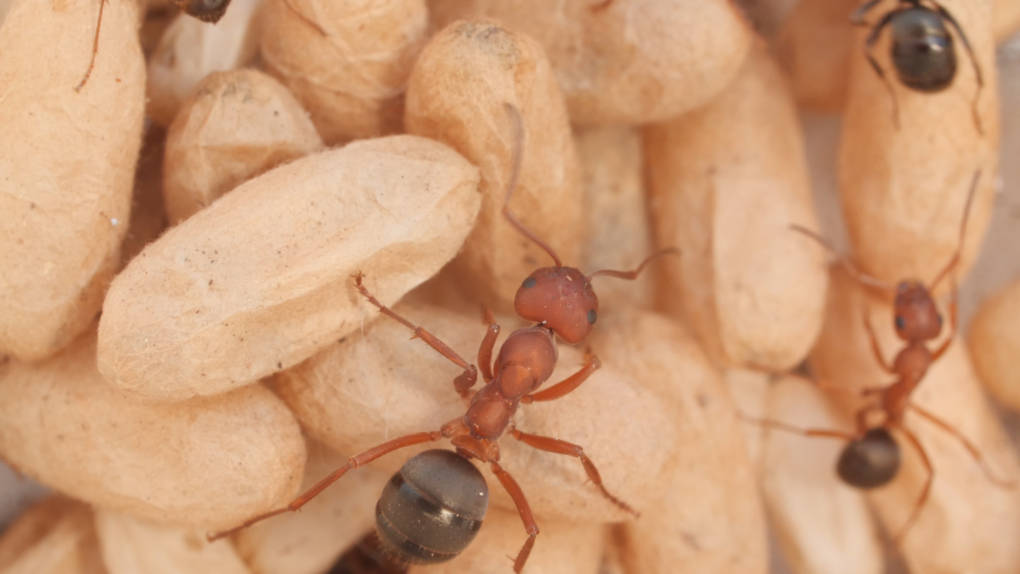
The members of this red-and-black species have grinding mandibles and can feed themselves. But they still kidnap other species’ pupae and raise them as workers in a similar way to the all-red obligate kidnappers.
These “facultative” kidnappers represent an evolutionary halfway point between free-living ants and obligate kidnappers.
By studying these species, Kelsey and her colleagues say they hope to learn more about how kidnapping came to exist in these incredibly social insects.
Studying ants isn’t without its risks.
“The danger is mostly getting bitten many, many times, and swarmed by very angry ants,” says Scheckel.
These species don’t sting, but are able to spray formic acid from their backside that can even cause minor chemical burns.
But for Scheckel the pain is worth it to study such a complex social animal.
“I can roll over a log and see an entire world,” she says. “And in the ants’ case, an entire society and community living right there at my fingertips.”
Laura Shields contributed reporting.
